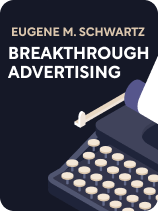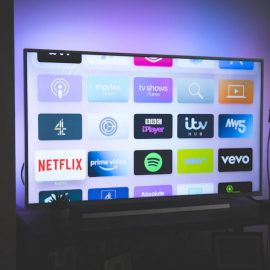

This article is an excerpt from the Shortform book guide to "Breakthrough Advertising" by Eugene M. Schwartz. Shortform has the world's best summaries and analyses of books you should be reading.
Like this article? Sign up for a free trial here.
What is persuasive copywriting? How can you spread your company’s message in the market?
An essential part of crafting an effective advertisement involves writing copy that builds on and reinforces the message in your headline. In Breakthrough Advertising, Eugene M. Schwartz offers four strategies for achieving this.
Check out these persuasive copywriting techniques that will convince customers to buy your product.
Copy Strategy #1: Evoke Customers’ Aspirations
The first persuasive copywriting technique is to consider the type of person your customers aspire to be or the lifestyle they want to have. Then, convince them that they’re very unlike this aspirational self because they’re missing something. Finally, show them how your product will help them feel, become, or appear more like the person they dream of becoming. This is effective because when you provoke a feeling of dissatisfaction, you prime customers to actively seek a solution. This makes it easier for you to convince them that your product is the “missing” thing that can “fix” them or enable them to truly become the person they aspire to be.
For example, include statements such as, “Aren’t you sick of always being the single one at parties?” and, “With this app, you’ll easily find someone that makes your friends jealous!”
(Shortform note: Kaufman (The Personal MBA) expands on why provoking a feeling of dissatisfaction makes customers more receptive to your product. According to him, even when customers want to improve something in their lives, they’re only receptive to products that claim to help them if they’re uncomfortable with their current situation. This is because people are more motivated to move away from discomfort than they are to move toward comfort. So, if they’re comfortable with their situation, they won’t feel motivated to buy products that claim to change their lives. However, if you provoke feelings of dissatisfaction or discomfort, you’ll motivate them to seek relief—by buying your product.)
Copy Strategy #2: Explain Exactly How Your Product Fulfills Their Need
Explain exactly how different product features effectively fulfill the customer need you’re targeting. Schwartz suggests that you refer to the product analysis you’ve already completed—your list of all the materials used to create the product, the technical specifications, the aesthetic details, and all the different ways customers might want to use your product. Consider how you can frame these different features as proof that your product can effortlessly fulfill the customer’s need. For example, “Our unique algorithm ensures that every match is compatible.”
(Shortform note: Tracy (The Psychology of Selling) adds to Schwartz’s strategy with two pieces of advice for presenting product features as proof of a product’s effectiveness. First, introduce features one at a time to avoid overwhelming the customer with information. Second, use the following three-part structure: “Because of (feature), you can (benefit), which means (relevance).” This structure links the product feature to its benefit and then makes it relevant to the customer. For example, “Thanks to our unique algorithm (feature), you’ll only see profiles for compatible matches (benefit). This means you won’t waste any time finding your perfect match (relevance).”)
Copy Strategy #3: Use Endorsements to Prove Your Product’s Effectiveness
Schwartz recommends that you include recommendations from professional experts, testimonials from happy customers, or celebrity endorsements. This is effective because endorsements act as external validators or social proof that convince skeptical customers that your product can fulfill their unmet needs. For example, “[Celebrity] found the love of her life through our app and she couldn’t be happier.”
(Shortform note: Marketing experts confirm that testimonials and endorsements are an effective way to establish customer trust and increase sales. According to them, effective endorsements hinge on two factors. First, an endorsement’s success depends on how well you know your potential customers’ interests—this guides your decisions about what type of expert or endorser to look for. For example, if you know that your customers care about the environment, you’ll look for someone who has already expressed an interest in similar issues. Second, an effective endorsement depends on how authentic the endorsement seems—the easier it is for people to believe that the endorser actually uses your product or service, the more appealing it will be.)
Copy Strategy #4: Emphasize Your Product’s Superiority
The last persuasive copywriting technique is to point out weaknesses in competitors’ products and emphasize your product’s superiority to demonstrate that it’s the best option. This is effective because the more aware customers are of competitors’ products, the more help they need distinguishing between these products to figure out the best option. Therefore, emphasizing all of the ways your product does a better job than what competitors offer helps customers judge your product as the best option. For example, “Unlike other apps, we ensure user profiles are accurate so that you always know who you’re meeting.”
(Shortform note: According to Luther (The Marketing Plan), instead of focusing solely on what makes your product superior to competing products, you should also emphasize what your business does better than your competitors. This will help differentiate both your product and your business in a way that appeals to customers. To achieve this, consider how you want customers to perceive your business and what will influence them to choose you over competitors. For example, brands that target eco-conscious customers emphasize how much they donate to environmental programs. This implies that they’re more environmentally friendly than other businesses and that they care more about what matters to customers.)

———End of Preview———
Like what you just read? Read the rest of the world's best book summary and analysis of Eugene M. Schwartz's "Breakthrough Advertising" at Shortform.
Here's what you'll find in our full Breakthrough Advertising summary:
- Why the headline is the most important component of an advertisement
- Specific techniques you can use to create captivating headlines
- Persuasive methods you can apply to write compelling copy






